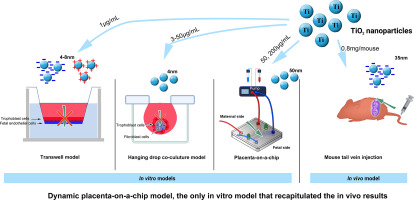PLACENTA ON CHIP
Why in News:
Recently, researchers have developed devices called placenta-on-a-chip (POC).
Important Points:
- A variety of devices that imitate the placenta at various stages of pregnancy can aid in drug development, study the toxicity of substances such as caffeine, and understand the impact of preeclampsia and diabetes mellitus during pregnancy.
- During pregnancy, the placenta protects the infant from potentially dangerous medications and toxins. However, some can still pass through this barrier and injure the baby in the womb.
- As a result, most drugs are not offered to pregnant women, and they continue to suffer.
- It is difficult to determine which medications can be administered during pregnancy that will not pass the placenta.
Placenta on chip:
- A bunch of devices mimicking the placenta at various stages of pregnancy can help in drug discovery, study of toxicity of chemicals like caffeine, and understanding the effects of conditions such as preeclampsia and diabetes mellitus during pregnancy.
- In pregnancy, the placenta shields the baby from harmful drugs and chemicals. But some can still cross this barrier and cause harm to the baby in the womb.
- Thus, pregnant women are not given most medications and they continue to suffer. Determining which medicines can be given during pregnancy that would not cross the placenta is a daunting task.
- Researchers have used microfluidic technology which can integrate processes, to create an environment that represents basic organ structure and functions of the placenta.
- It allows researchers to investigate placental function, diagnose issues, practice customized medicine, and develop new medicines.
- This will reduce the need for animal testing and change the pharmaceutical industry, improving the lives of millions of people worldwide
- The placenta in a lab dish developed by the team allows different cells to interact with each other, incorporate mechanical properties and mimic the blood flow, which closely resembles the in-vivo condition.
- Among various available POC models, these devices are more suitable for probing placental development as well as diseases caused due to defects in the placenta. Also, patient-specific sample screening will be possible for personalised medicine.




.jpg)
.jpg)
.jpg)
.jpg)
.jpg)


.jpg)


